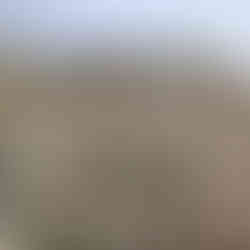When is a penguin not a penguin - When it's a Guillemot....
- johnff750
- Jun 27, 2023
- 2 min read
Woke this morning at Bear Island for a 7.30am zodiac cruise. Temperature is a balmy 4’C. Bear Island (Norwegian: Bjørnøya), is the southernmost island of the Norwegian Svalbard archipelago. The island is located at the limits of the Norwegian and Barents seas, approximately halfway between Spitsbergen and the North Cape. Bear Island was discovered by Dutch explorers Willem Barentsz and Jacob van Heemskerck on 10 June 1596. It was named after a polar bear that was seen swimming nearby, which they subsequently killed. The island was considered terra nullius until the Spitsbergen Treaty of 1920 placed it under Norwegian sovereignty. Bear Island has the lowest average yearly sunshine in Europe. The island is rich in seabirds that nest on the southern cliffs and has been identified as an Important Bird Area (IBA) by BirdLife International. It has one of the largest seabird colonies in the North Atlantic. It supports breeding populations of northern fulmars (50,000–60,000 pairs), glaucous gulls (2000 pairs), Atlantic puffins, black-legged kittiwakes (100,000 pairs), little auks (10,000–100,000 pairs), common guillemots (50,000 pairs), thick-billed guillemots (190,000 individuals) and black guillemots (1000 pairs). The Soviet nuclear submarine Komsomolets sank near here on 7 April 1989 some 135 nautical miles (250 km) southwest of Bear Island. A fire on-board resulted in 42 dead. Leakage of radioactive material from the reactor and 2 nuclear warheads currently poses a problem so I would not advise a swim!!. The money shot on Bear Island was a magical sea cave some 200m long. There is also the remains of the Russian vessel Petrozavodsk shipwrecked when a drunk skipper rammed the base of the cliffs. Today we were the first ever discovery tour on the new ship Scenic Eclipse11. Tomorrow when we wake we will be in Svalbard.









































Comments